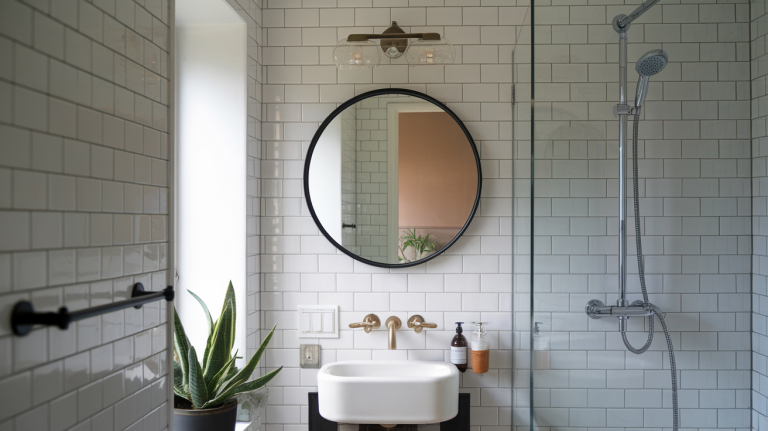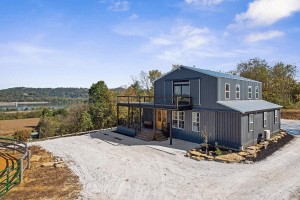Mixing metals in the bathroom can seem challenging, but it doesn’t have to be. I used to think everything had to match, faucets, handles, even towel bars.
However, once I started mixing finishes like brass and black or chrome and gold, the space felt more stylish and personal.
You don’t need to be a designer to get it right. Just a few simple tips can help your bathroom look balanced and pulled together.
In this post, I’ll share how I choose metal finishes that work well together and where to place them.
From fixtures to mirrors to lighting, mixing metals can add warmth, depth, and interest. With the right combos, your bathroom can look modern and fresh without being too bold or messy.
Let’s break it down step by step.
Why Mixing Metals Works in Today’s Bathroom Design
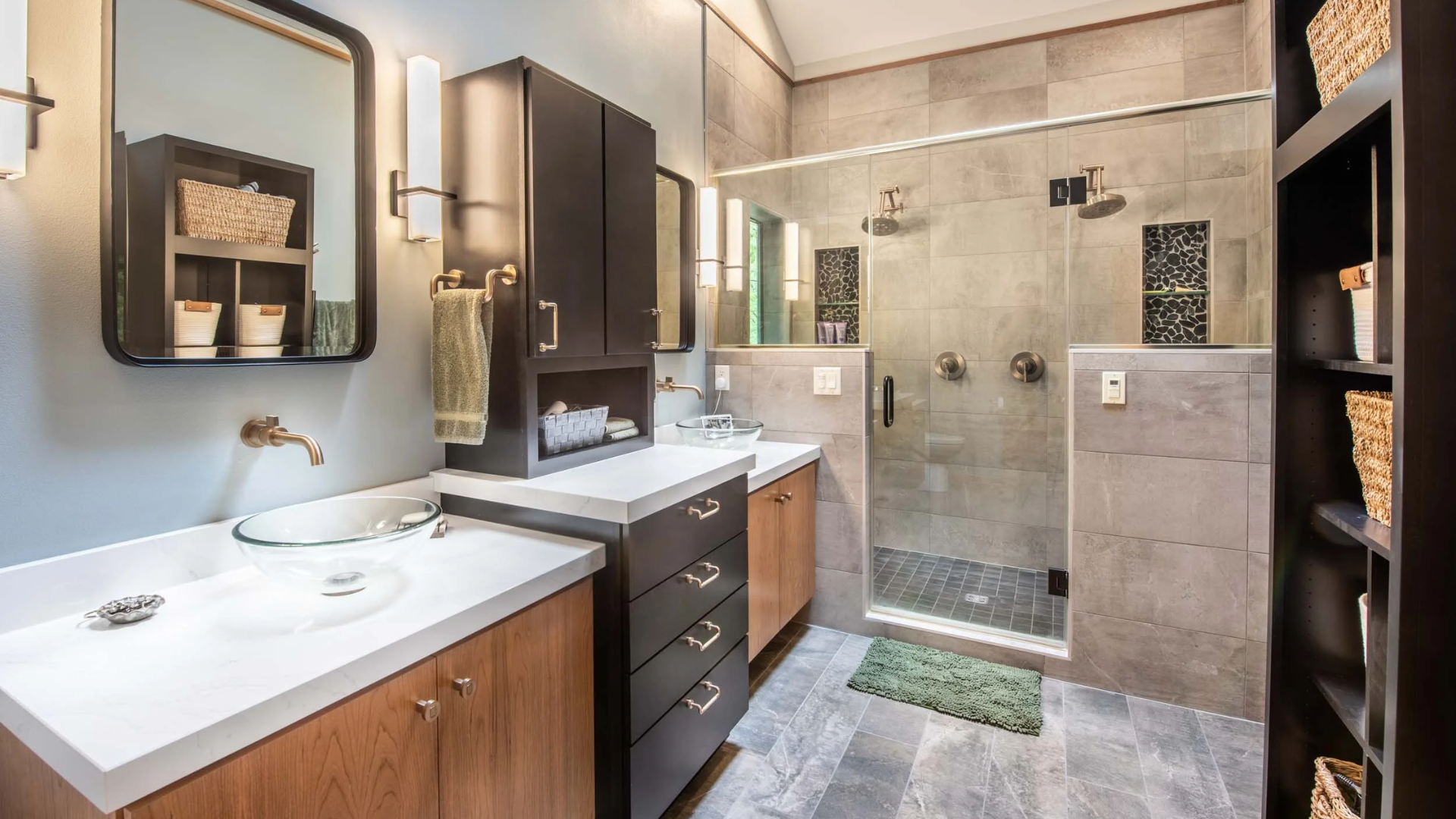
Designers now embrace mixing metals to add depth and interest without overwhelming the space. Using two or three metal finishes gives a sense of intentional layering.
You start with a dominant metal for fixtures and plumbing, then add accents in lighting, hardware, or accessories.
Paired properly, metals like chrome and brass work together without feeling chaotic. Mixing finishes creates contrast and avoids a “one‑note” effect.
It also lets you reuse pieces from different sources or brands while still blending everything well in a redesigned space.
This approach brings flexibility to design decisions. It also allows you to update the look over time without starting from scratch.
Simple Rules for Mixing Bathroom Metals
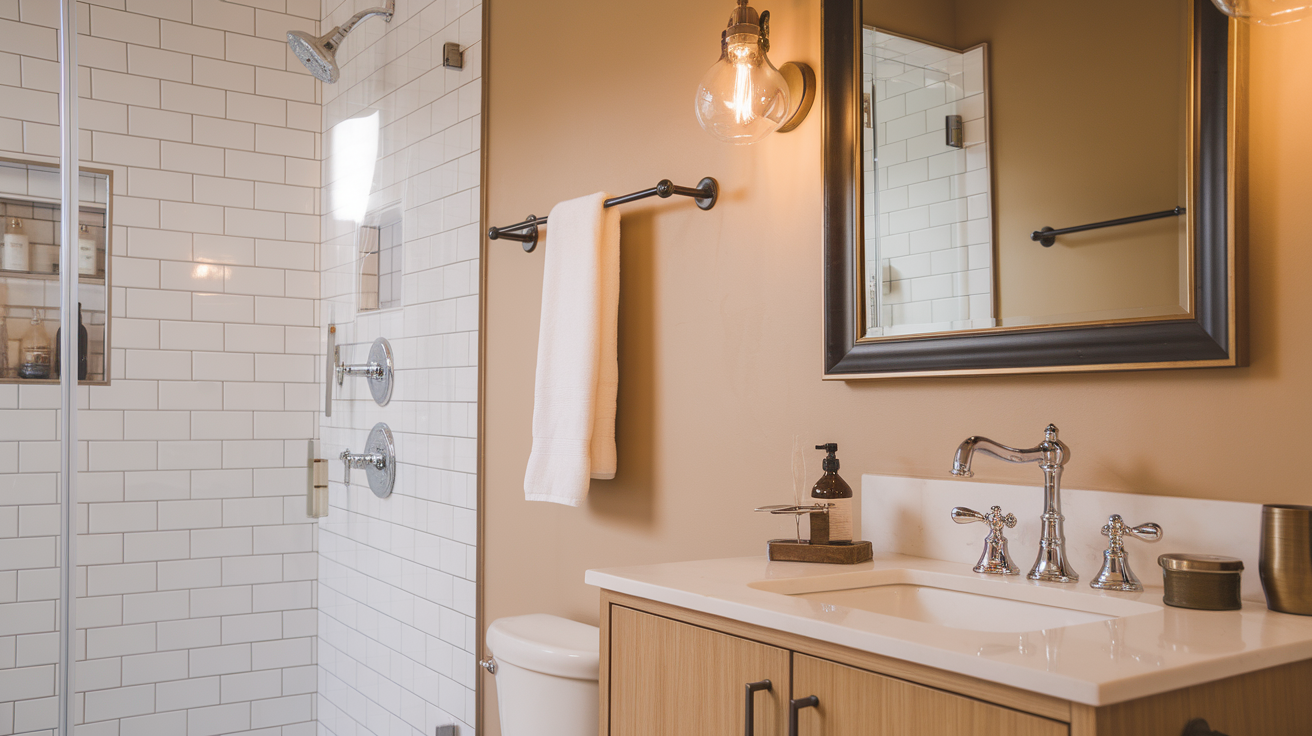
Mixing metals in the bathroom creates depth and personality when done right. These simple rules help you pair finishes with confidence and balance.
1. Pick a Dominant Metal (~60%)
Start by choosing one metal to lead the look; this should cover faucets, showerheads, towel bars, and any major plumbing fixtures.
This primary metal will anchor the entire room, keeping the overall design stable and intentional. Chrome works well for a modern shine, brushed nickel gives a muted coolness, and brass warms the space.
Using one dominant finish avoids a scattered or mismatched feel. This 60% rule creates balance and helps the other finish complement, not compete.
2. Add Accent Metals (~30%)
Once your main metal is in place, layer in one or two secondary finishes for lighting, cabinet pulls, or mirror frames. These accent metals fill about 30% of your visual field and are key to creating contrast and interest.
For example, brass lighting looks great against chrome plumbing.
Or matte black hardware adds a clean edge to brushed nickel fixtures. These finishes should repeat at least twice in the room to stay intentional and not feel out of place.
3. Avoid Close-Match Metals
Don’t pair two metals that are too close in tone or sheen. A common mistake is mixing chrome with polished nickel or stainless steel; they look slightly different but clash in practice.
This creates a mismatched look rather than contrast. Choose finishes with distinctly different undertones or textures instead. For example, pair brushed brass with polished nickel or matte black.
Visual separation makes each finish feel purposeful instead of like a failed attempt to match.
4. Keep Categories Consistent
Group each finish by its function to create a sense of order. For example, use one finish for all plumbing fixtures, another for lighting, and another for hardware like drawer pulls or towel hooks.
This helps the design stay organized, even when you use two or three different finishes. It also avoids metal finishes clashing in the same line of sight.
The bathroom feels curated and layered, not chaotic, when each category holds its own finish.
5. Respect Undertones
Metals come in warm, cool, and neutral tones. Warm tones like brass, bronze, and copper go together naturally and give a cozy feel. Cool metals like chrome and polished nickel offer a crisp look and pair well with each other.
Matte black acts as a neutral; it plays well with both warm and cool finishes.
When you respect undertones, the space feels cohesive and intentional. Clashing undertones, on the other hand, break visual harmony and feel off-balance.
6. Limit to Two or Three Metals
Stick to a maximum of two or three finishes in one bathroom. More than that can feel messy or overwhelming. If you’re just starting, two is safe: one for major fixtures and one for accents.
A third metal can work, but only if used sparingly and with intention.
Think of it as a design “pop,” not a new theme. Limiting your palette helps the room stay consistent while still offering visual depth and personality.
7. Mix Textures and Sheens
Pairing different textures, like polished chrome with matte black, adds dimension without introducing new colors.
This keeps your mix subtle and refined. Brushed, antique, or hammered finishes also bring in depth and tactile contrast.
For example, brushed nickel paired with antique brass offers contrast while remaining soft on the eyes.
These variations in texture and sheen help highlight different areas without competing for attention. It’s a simple way to add interest without clutter or over-designing the space.
Applying the Rules: Where to Use Mixed Metals
Now that you know the rules, it’s time to put them into action; how to mix metals across fixtures, lighting, and accessories the right way:
- Faucet & Shower Fixtures: These fixtures serve as your dominant metal. Chrome and brushed nickel are popular for ease of use and shine, while brass or bronze adds warmth and character. Whatever you choose, use it across all plumbing fixtures to unify the look.
- Cabinet Hardware & Mirror Frames: Here, you introduce your accent metal. If fixtures are cool-toned, pick a warm accent metal in handles or mirror frames. It defines focal points and adds contrast where the eye naturally lands.
- Lighting Fixtures: Sconces or vanity lights are great metal accents. They ground the ceiling elements and help tie the scheme together. Consider matte finishes here if your main fixtures are polished, balance without competing.
- Accessories & Towel Bars: Small items like towel rings, robe hooks, or soap trays are ideal for mixing metals in subtle ways. Repeat your accent metal here to reinforce cohesion, just keep spacing consistent.
Add Plants to Soften Metal Finishes
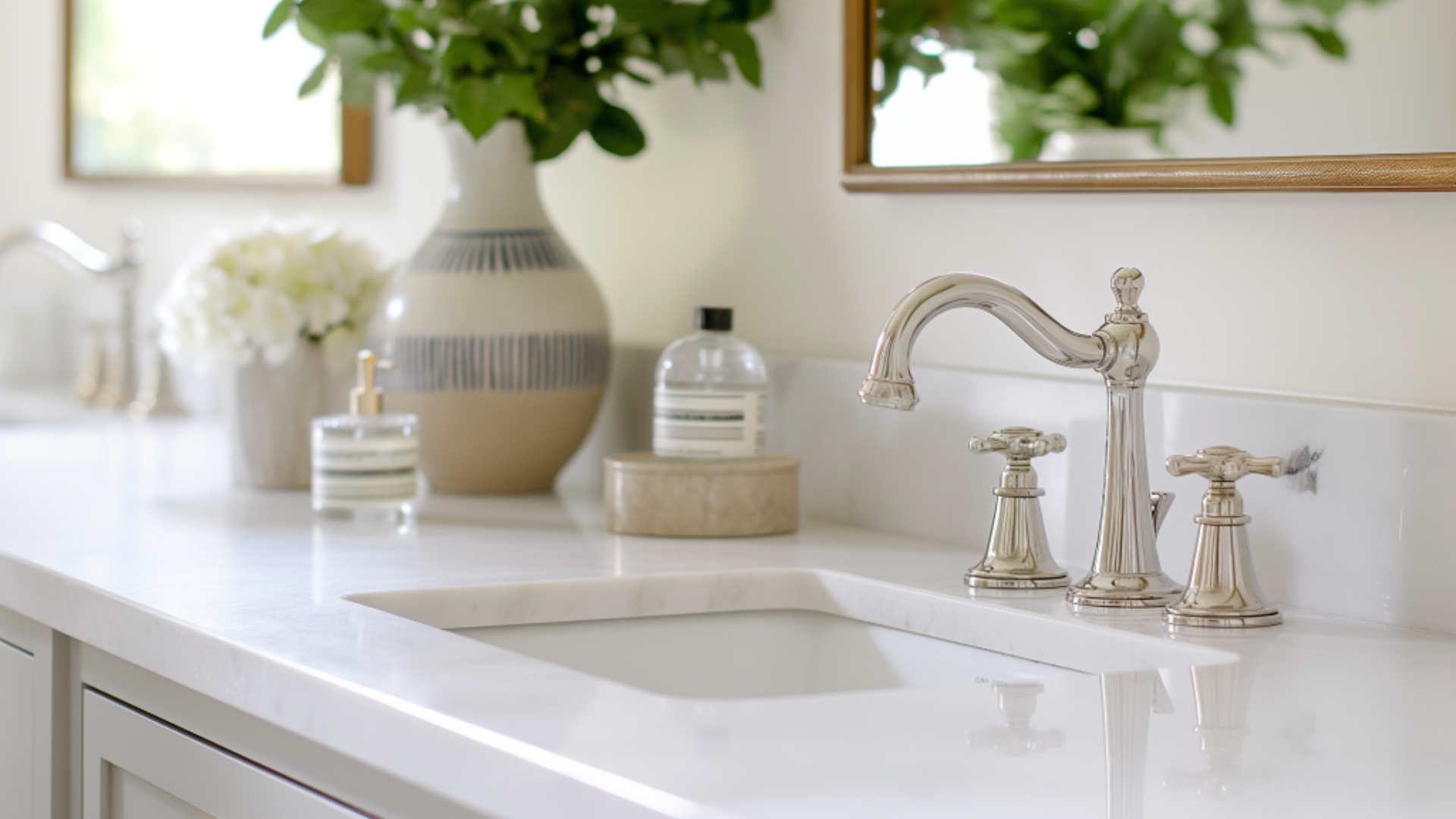
When mixing metals in the bathroom, adding plants helps balance the cool or industrial feel of chrome, brass, or matte black finishes.
Greenery brings warmth, texture, and a natural element that complements all metal tones.
I like to place a small fern on an open shelf or let a pothos trail down beside the mirror. Even a single eucalyptus stem in a glass vase adds softness.
Plants also break up metallic lines and create a relaxed, lived-in look.
They work well in any size space and blend beautifully with both warm and cool tones. You don’t need much; just one or two carefully placed plants can tie the whole room together and make it feel fresh and welcoming.
They also improve air quality and add subtle color without clashing with your metal palette. Choose low-maintenance options that thrive in humidity, like snake plants or peace lilies.
Plants That Balance Metal Finishes in Bathrooms
Using the right plants softens sharp metal contrasts and brings life to your bathroom. These greenery choices work well with most finishes:
- Snake Plant (Sansevieria): Tall and structured, the snake plant pairs well with sleek finishes like chrome or matte black. It thrives in low light and tolerates humidity, making it perfect for bathrooms with modern metallic tones.
- Pothos: This trailing plant looks great in hanging baskets or draping over shelves. It adds movement and softness, especially next to brass or gold finishes. Pothos grows well in indirect light and is very low-maintenance.
- Peace Lily: With its white blooms and glossy leaves, the peace lily adds brightness and calm. It complements brushed nickel or polished chrome and thrives in warm, steamy bathroom conditions.
- ZZ Plant (Zamioculcas zamiifolia): Great for darker bathrooms, the ZZ plant’s dark green leaves contrast beautifully with lighter metals like gold or brass. It needs very little water and adds structure and polish.
- Spider Plant: This plant’s striped leaves bring a fun accent that works with any metal finish. It’s ideal for hanging near windows or placed on vanities and handles humidity well.
Common Mistakes You Can Avoid
Mixing metals adds style, but only if done with care. Here are common mistakes to watch out for so your bathroom stays balanced, not busy:
- Using more than three finishes.
- Pairing similar metals that clash visually.
- Mixing metals too closely in the same visual zone.
- Choosing different brands with inconsistent color tones.
- Forgetting to repeat accent metals across accessories for rhythm.
Tips to Make Mixed Metals Work
Pulling off mixed metals in your bathroom takes a little planning and the right balance. This is how you can bring it all together without overdoing it:
- Decide your dominant finish first, think faucets, shower hardware, and towel bars.
- Add accent finishes in fewer visible places, mirror frame, lighting, and drawer pulls.
- Check visual flow; accent metals should appear in at least two separate areas.
- Keep neutrals and faucets in one finish category; decorative items in another, avoid overlap.
- Buy hardware from a single finish supplier to avoid subtle undertone mismatches.
- If reusing old pieces, choose ones that match your main or accent finish to blend into the scheme.
Conclusion
You now understand how to mix metals in your bathroom with intention and design balance. You set your dominant finish for fixtures, then select accent metal for hardware or lighting.
By limiting to two or three finishes, respecting undertones, and grouping metals by category, your bathroom feels curated and cohesive.
You avoid common mistakes like mixing similar finishes or overusing too many options.
With simple design rules, you can confidently choose metal combinations that feel stylish and timeless.
Mixing metals this way adds character and flexibility to your space, and it lets you update details easily as trends evolve.
This approach works in any bathroom size, from powder rooms to primary suites. It’s all about balance, contrast, and making the space feel like yours.


